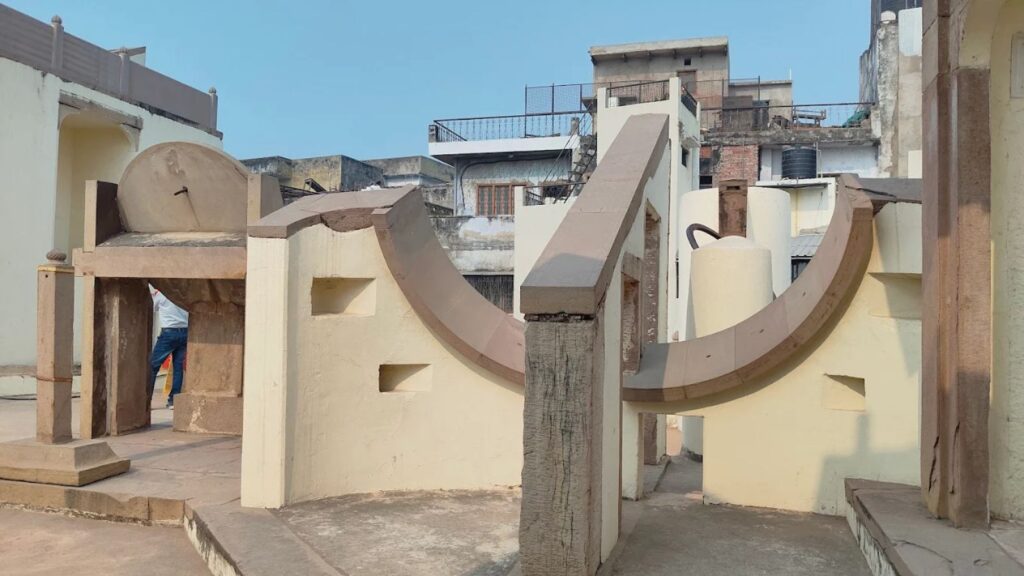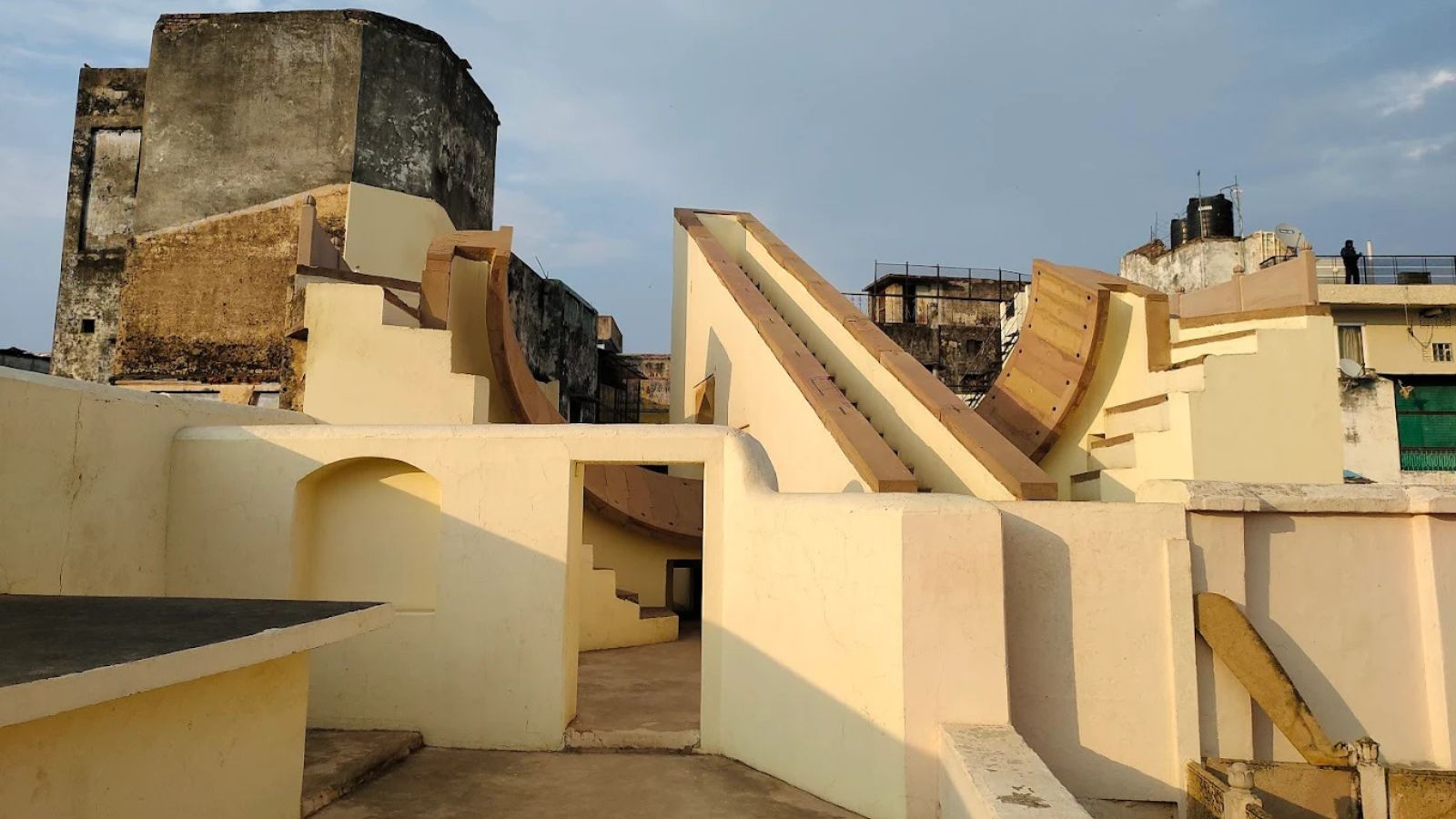The name Jantar Mantar derives from the Sanskrit Yantra Mantra, meaning “instruments and formulas.” It refers to a set of observatories built in the 18th century by Maharaja Sawai Jai Singh II of Jaipur for the precise study of celestial phenomena. The Jantar Mantar in Varanasi, constructed in 1737, is one of five such observatories (the others are in Delhi, Jaipur, Ujjain, and Mathura) and represents India’s remarkable blend of science, astronomy, and architecture.
Unlike modern observatories that rely on telescopes, these stone marvels use giant yantras (geometric instruments made of stone and brick). Their design converts mathematical formulas into large-scale physical models, enabling astronomers to observe with the naked eye but still achieve remarkable accuracy.
How Time Was Measured
The most prominent instrument, the Samrat Yantra, functions as an enormous sundial. Its triangular gnomon casts a shadow on a precisely marked scale, allowing astronomers to calculate the local solar time to an accuracy of about 2 seconds. By tracking how the shadow moved across the scale, they could adjust for latitude and seasonal changes. This was vital in an age before mechanical clocks were reliable in India.

Other instruments provided complementary measurements:
- Krantivritta Yantra – measured the positions of celestial bodies relative to the equator and ecliptic.
- Digamsha (or Digandha) Yantra – determined the azimuth, or direction, of a celestial object.
- Prakash Yantra – studied the variation of sunlight and shadows to understand solstices and equinoxes.
- Ram Yantra – measured altitude (angular height) and direction of planets and stars using circular walls.
- Disha Yantra – showed the cardinal directions for orientation.
- Dhruva Yantra – helped locate the Pole Star (Dhruva Tara) as a fixed point of reference in the night sky.
Through these instruments, scholars could calculate local time, track planetary paths, predict eclipses, and refine calendars used for religious rituals and agricultural planning. The observatory in Varanasi thus bridged the gap between tradition and science, anchoring astronomical precision in stone.
Key places of interest around:
- Manmandir Ghat (0 m) – Built by Raja Man Singh, it houses the Jantar Mantar observatory itself.
- Dashashwamedh Ghat (150 m) – The most vibrant ghat of Varanasi, famous for the grand Ganga Aarti every evening.
- Kashi Vishwanath Temple (300 m) – The holiest Shiva shrine, revered as one of the twelve Jyotirlingas.
- Gyan Vapi Mosque & Well (280 m) – A Mughal-era mosque adjacent to the temple complex, with the legendary “Well of Knowledge.”
- Annapurna Devi Mandir (320 m) – A sacred temple dedicated to the goddess of nourishment, close to Kashi Vishwanath.
- Nepali Mandir (Kathwala Temple) (450 m) – A 19th-century pagoda-style temple built by the Nepalese king in traditional Kathmandu architecture.
- Lalita Ghat (460 m) – Known for the Lalita Gauri Temple and the Nepali Mandir, offering a serene riverside setting.
All of these lie within a 5-minute radius walk, making Jantar Mantar a perfect starting point for a compact heritage trail.



